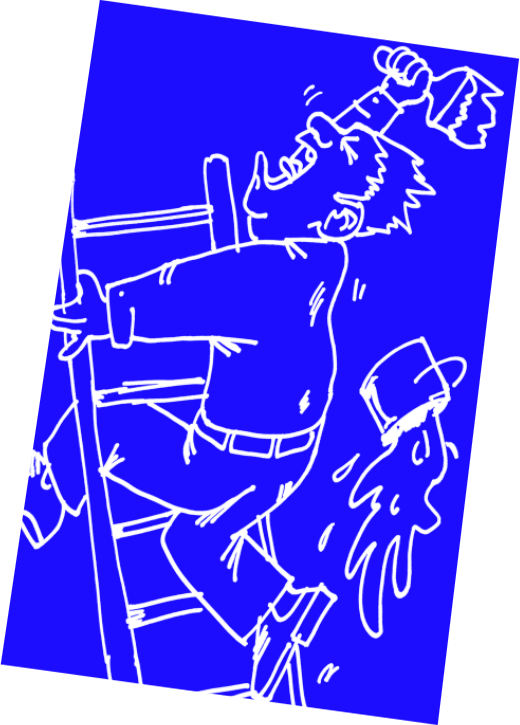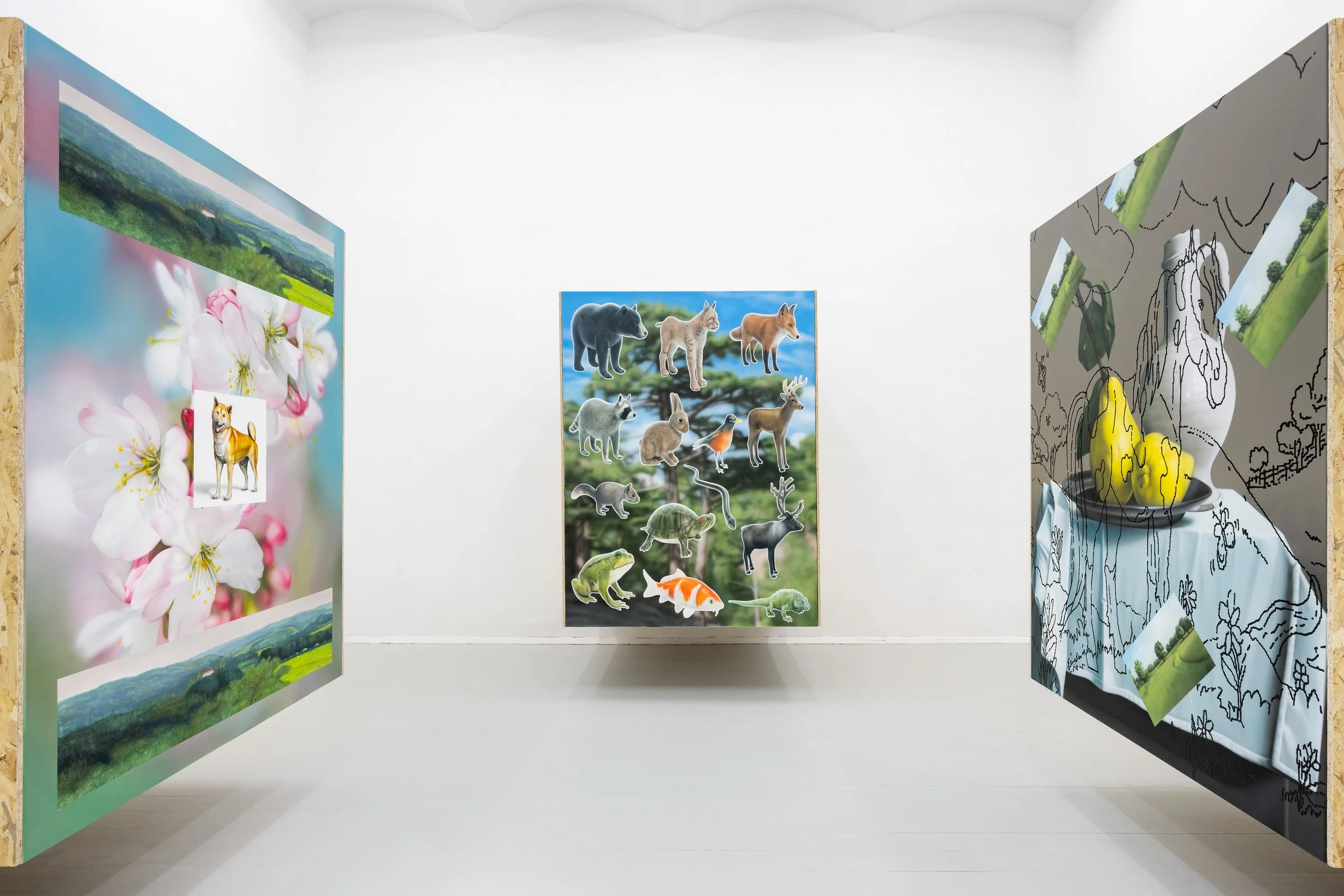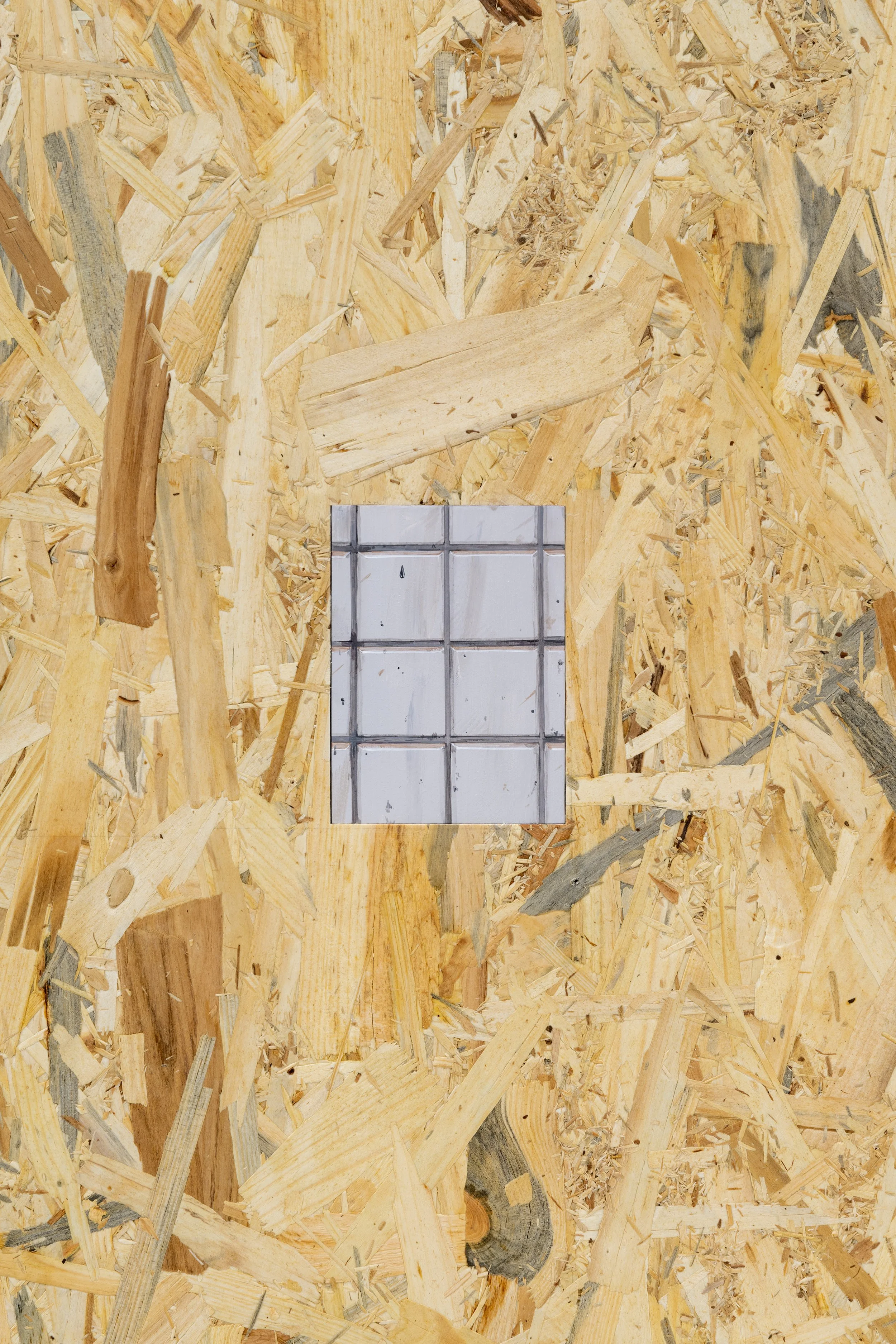KOENIG2 by_robbygreif / Solo show / 9.3.-22.4.2023
KOENIG2 by_robbygreif
Solo show 9.3.-22.4.2023
Margaretenstraße 5, 1040 Vienna
If we understand artificial and human intelligence as two entirely distinct entities, Paul Riedmüller’s (*1989 in Graz, lives and works in Vienna) compositions exist somewhere in between. Concerns about the demise of painting have resurfaced of late with the increasing hype about AI image generators and digital art in general: Will Dall-E, Midjourney and NFTs put painters out of work? Paul Riedmüller shows that such infrastructures can be instrumentalized as a powerful resource in the manual creative process, thus nuancing such apocalyptic prophecies by problematization and empiricism: Utilizing an unlimited nexus of imagery ranging from found footage to AI generated images to physiologically acquired stimuli, the artist generates collaged compositions that he then paints in appropriative deceleration. Through this process, Riedmüller reshapes and reproduces what initially has already been shaped and produced. This duplication results in a reversal of familiar directional dynamics: While we usually multiply unique into digital, the artist reduces potentially infinite copies into a singular item.
Since practice always shapes and changes not only the practitioner but also those who are confronted with and affected by the practice, Paul Riedmüller's images leave us with the intriguing challenge of deciphering their medial and pictorial codification. For the artist, however, the production process is a meditative source of recreation. In an exhilarating infinity of options, he calmly explores the contour of painting. With countless puffs of airbrushed acrylic or sleek oil paint he simulates different expressions of visual language filled with recurring pictorial subjects that appear to be similar but are semantically anticommutative: A painting of twelve animal depictions recalls a nonfiction book, while the motif of a Shiba Inu is reminiscent of meme culture and digital currency (crypto bros will know). Subtle humorous and playful experimentation is a fundamental paradigm of Riedmüller’s work.
But not only in terms of content, but also in those of media, the artist engages in a multifaceted process. Various layers with different textures and surface qualities are superimposed without being limited by coherence and mimetic organicism: The classical depiction of a still life with fruits, immaculately airbrushed onto the canvas, is overlaid with tilted, repetitive landscape imagery whose proportions have nothing in common with those of the still life. In the intermediate layer, executed in black line, a seemingly autonomous realm with completely different means of formation which, unlike the corporeal fruits, has planar, graphic qualities. These optical strata, projected onto a single plane, behave like conundrums: If one is focused, others become virtually imperceptible. And yet, all must exist in order for our gaze to be directed through and over the painting. Trapped in this circular matrix of formally referential layers, we encounter peculiar spheres of imaginativeness that defy any traditional form of description. They appear to be the perpetuation of a temporal and spatial sequence beyond the present, equating forwards and backwards in all dimensions. The parameters of Riedmüller's paintings are thus similar to those of unusually vivid dreams, like hyperphantasia manifested in immediate subconscious experiences that would take Freud by surprise.
In this way, Riedmüller creates autoreflexive works which on one side simulate light and space, suggest and manipulate presence and perspective, challenge visual habits, and on the other side query the appearance of traditional painting: The penetration of the images into physical space through their attachment to wooden crates gives them the potential for imaginative kinetics. Painting and sculpture merge into a novel potential space that blurs dimensional and medial boundaries. Conveying a multiplication of the wall surface through extrusion, the exhibition explores a hierarchy of perception through placement on and within surfaces. This energetic aspect of multiplying semantics again demonstrates Riedmüller's delight in experimental empiricism.
(Teresa Kamencek, 2023)





